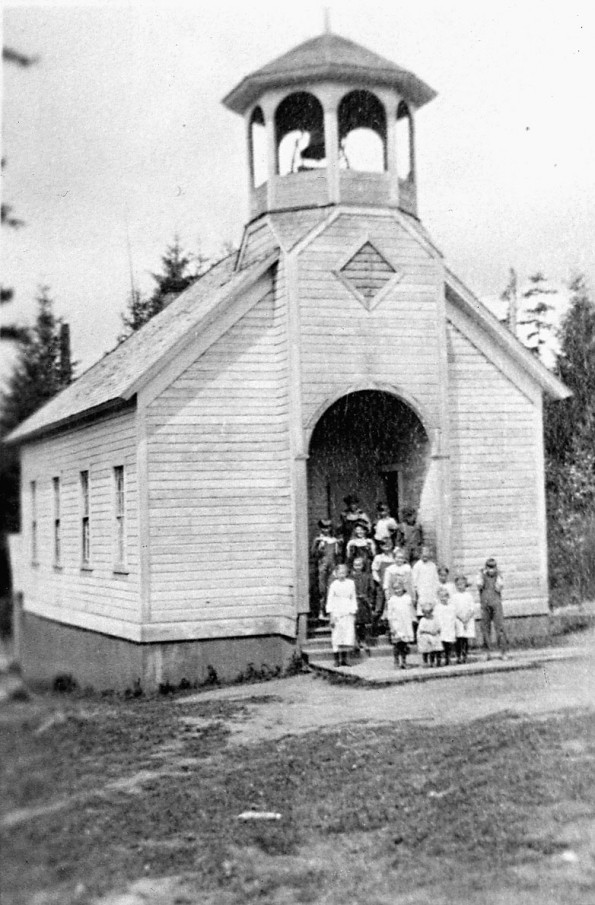A historic community with a picturesque name, Bee Tree is fast becoming just a memory.
The old one-room still stands, ramshackle and deteriorating, but there is little else to mark the pioneer settlement that provided ties for Northwest railroads.
“Most of the old settlers are dead, and their families have moved away,” said Adeline Harrison, about the last of the old time Bee Tree residents.
Mrs. Harrison was born in 1889 on the same property on which she now lives, the last house on Bill Harrison Road. Bill Harrison is her late husband.
Bee Tree lies about five miles due north of Battle Ground in rolling hills that once grew some of the mightiest stands of Douglas fir in the nation. The area between the East and North forks of the Lewis River was solid forest when the settlers arrived. By 1908, the year the railroad was completed through Vancouver, some 35 sawmills were counted in the immediate area of the Lewis River country.
Mrs. Harrison is the daughter of Edwin and Belinda Batchelder who came from Iowa in about 1883. They homesteaded on the north side of Mason Creek, a rollicking stream that was to become the lifeblood of the community.
“Bee Tree got its name from a tree in which pioneers discovered a swarm of bees,” Mrs. Harrison said. To the pioneers, a hive of bees was as welcome as a 100 pound sack of sugar.
This bee tree stood about where the first school was built, a log cabin structure on the south side of Mason Creek Road. An early record of this school, dated Nov. 5, 1887, reveals that Ida Anderson was paid $25 a month to teach. School was in session just three months a year.
In 1896, the existing school building was constructed across the street from the original school. That was the year that Mrs. Harrison entered the first grade. She was taught by her brother, Milton Batchelder, 21.
Mrs. Harrison said she does not know how much education her brother had, but in those days only a grade school education was required of school teachers.
The Harrison children attended the same school as their mother. The school was operated until 1931, when the Bee Tree district consolidated with Battle Ground.
“Sure, we got a good education,” said Clarence Harrison, 69. “We had all eight grades in one room, but we learned alot.”
Harold Harrison, 58, also remembers the one room school.
“Sometimes we kids would sneak down to Mason Creek to go fishing, and we’d just forget to come back,” he confessed.
The biggest mill in Bee Tree was the Columbia Tie Co. on Mason Creek about one-quarter mile upstream from where County Road 3 crosses the creek. In about 1902, this mill was sold to Jim Brothers of La Center.
A logging railroad ran from the mill up the canyon. After the logs were sawed, the ties were dropped into a flume that carried them along the creek some seven miles downstream to near La Center. There the ties were rafted in the East fork of the Lewis and towed downstream to where the railroad was being pushed through to Portland.
Clarence Harrison remembers the mill and the pond into which the logs were dumped.
“A guy threw me in this pond when I was little and said ‘Swim, you little SOB,'” he recalled.
Harold Harrison said he used to stop the flow of water at the dam so he could pick up trout and salmon in the dry creek bed.
The site of the big mill has reverted to jungle-like growth, but an occasional rusting piece of rail marks the spot.
The Harrisons said there is nothing left to remind people of the heritage of Bee Tree except the old school, which is now privately owned. They said they would like to see it restored and preserved as an historical monument to the day when the rolling hills of Bee Tree, now denuded, were crowned by virgin forest.
